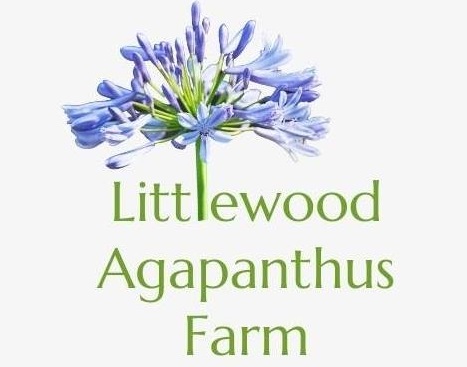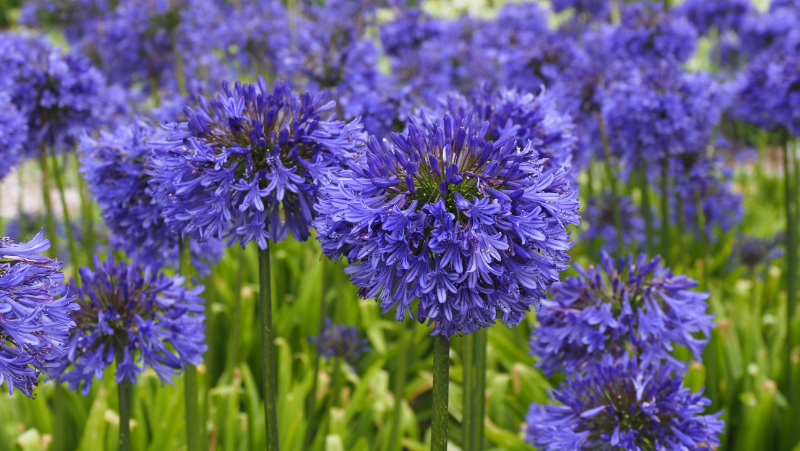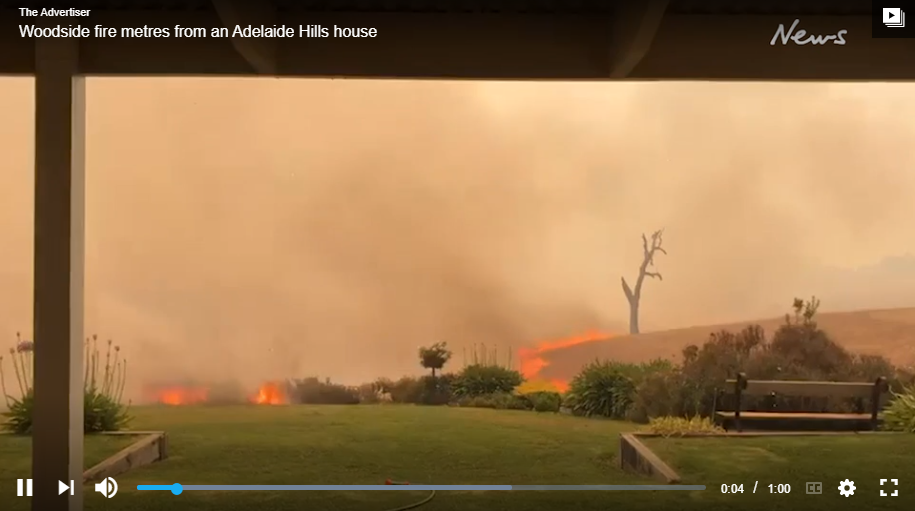Does your Hills bushfire protection plan include agapanthus? Here’s why it should.
Your Adelaide Hills bushfire protection plan will include many of the important, conventional features like cleaning leaves and debris from around your house, but in this article I’ll make a case for planting agapanthus to help blunt the effects of oncoming fires.
As you’ll see, the water-based nature of agapanthus means they don’t burn readily, unlike oil-based plants such as gum trees, olive trees, or lavender bushes.
Before we take a closer look at the makeup of agapanthus plants, let’s start with an historical reference to the surprising anti-fire nature of this shrub.
Agapanthus escape the flames
An interesting article in the Canberra Times, Fighting Fire With Forward Planning, Sunday, November 10, 1991, draws attention to the fire-retarding nature of agapanthus.
Journalist, Susan Parsons, reports on a family whose property was saved from the ravages of a bush fire by following advice from a Bushfire Prevention Course, which had advised planting rows of Shatoot Mulberry trees and Murraya hedges.
What caught my eye, was this paragraph midway through the article, relating to our beloved agapanthus:
A low hedge of Grevillea (Robyn Gordon) was wiped out in my friend’s garden and although her terracotta pots succumbed, the clumps of fleshy agapanthus in them were only singed.
This observation about agapanthus did not surprise me at all because every year we have burn off piles at Littlewood Farm, and trying to ignite the plants is a massive challenge.
The key point to note here is that it is the “fleshy”, well-watered agapanthus that resist fire; if they’ve been left to dry out or die, they behave like most other vegetation.
Agapanthus are like little water buckets across your property
The reason Agapanthus are generally hard to burn is that inside the leaf is a water based gel called mucilage. Many plants contain mucilage including cactus and because it is water based it cools a fire and is retardant.
There is a caveat, the agapanthus need to be well watered so although they are renowned for being hardy and will survive on little water, they will actually thrive with being watered through summer and their fire retardant properties will be best.
When they are not watered and the outer leaves become dry and dead, you cannot expect them to work as well.
Agapanthus will generally survive a fire even if the leaves are blackened, they will sprout from the fleshy rhizome soon after and flowering is always most profuse after fire (Jamieson 2004; Bean & Johns 2005)
One thing is for sure, when we do our yearly burn off on the farm to reduce fuel prior to the fire season any Agapanthus material is difficult to burn!
Agapanthus and your Adelaide Hills bushfire protection plan
Nothing in this article should reduce or drastically change your standard, CFS-endorsed approach to your Hills bushfire prevention plan, instead, I’m hoping it will inspire you to consider agapanthus where you have clearings around your property that could benefit from some attractive vegetation.
Strategically planting beds of agapanthus around lawn, creates a passive barrier, especially for a paddock fire. We do not think it would make any difference to a ferocious bush fire.
As you’ll see in this video by Angus Campbell, he’s relieved he had agapanthus on his property before the 2019 Cudlee Creek fire that encroached upon his property. “The agapanthuses certainly weren’t the be all and end all. [They] were only part of the mix.” Not a ‘silver bullet’
Despite anecdotal evidence of the plants’ fire-retardant qualities, SA Country Fire Service’s acting director of preparedness operations Joel Taggart advised people not to rely on them.
“Agapanthuses themselves are not a silver bullet,” he said.
There are about 200 varieties of agapanthus around the world and here in the Hills we’ve chosen 20 varieties to plant at Littlewood Farm.
You can see pictures of varieties we have available, here on our Agapanthus plants page.
Or, if you’d like to see them growing and thriving in a Hills environment, take a stroll around Littlewood Farm which has more than 300,000 plants.
We’re always happy to answer your questions and we’re open Friday, Saturday, and Sunday, 10am to 4pm. Or by appointment.
We think it will be the most colourful approach you’ve ever taken to bushfire prevention planning!



